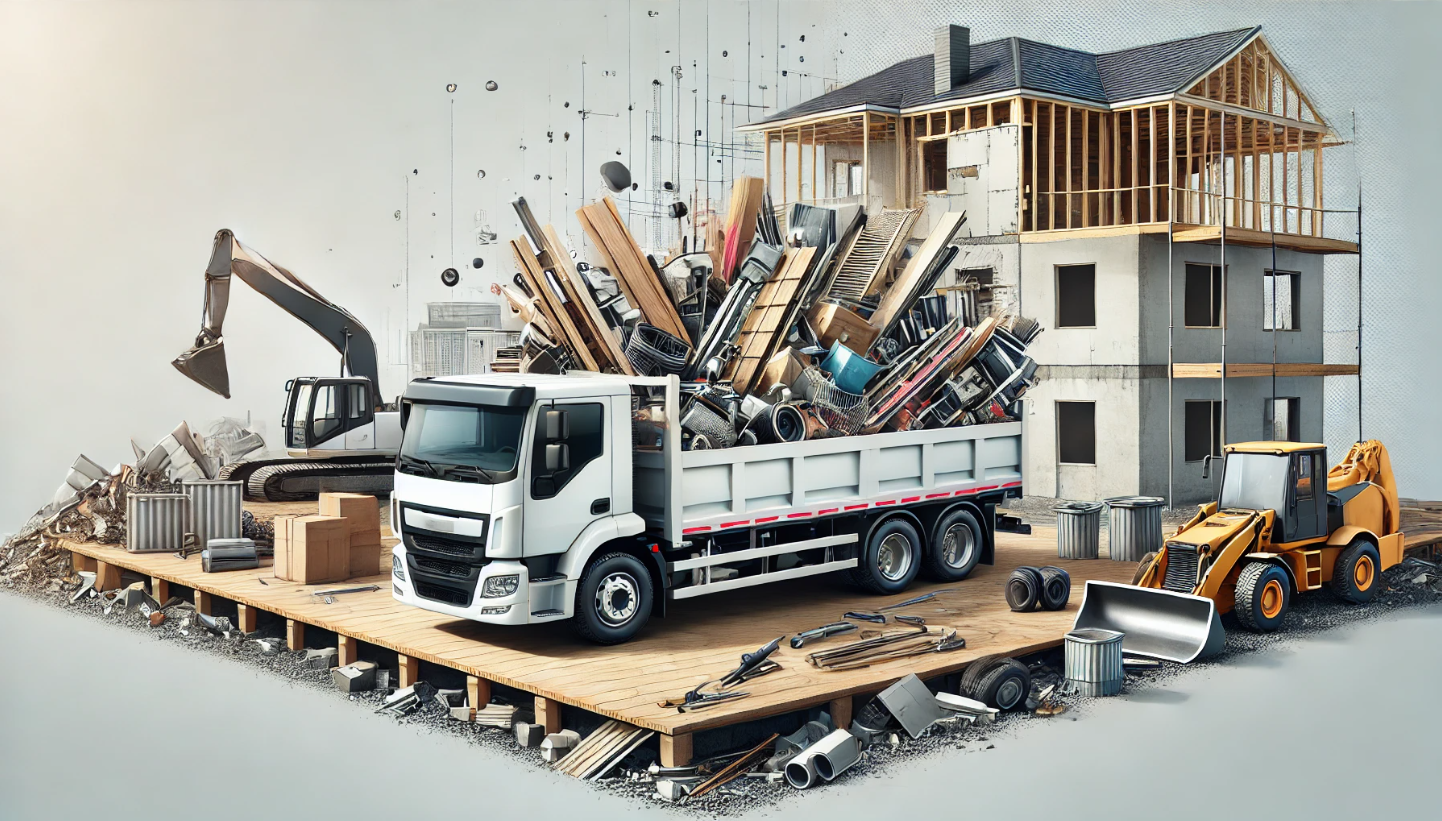
Construction Debris Removal: Simplifying Post-Project Cleanup
Construction projects, whether renovations or new builds, often leave behind piles of debris. Managing this waste effectively is crucial for:
- Safety: Reducing trip hazards and exposure to harmful materials.
- Efficiency: Clearing debris allows workers to focus on their tasks.
- Environmental Responsibility: Proper disposal minimizes landfill impact and promotes recycling.
Steps to Streamline Construction Debris Removal
1. Plan for Debris Removal During the Project
Include waste management in your project plan to avoid last-minute challenges.
Designate specific zones for collecting different types of debris.
2. Categorize Debris
Sort debris into categories such as recyclable, reusable, and hazardous materials. This ensures efficient disposal and reduces costs.
3. Partner with a Professional Debris Removal Service
- A reliable service provider will:
- Handle large and bulky debris safely.
- Dispose of hazardous materials according to local regulations.
- Offer recycling options to reduce environmental impact.
4. Schedule Regular Pickups
For ongoing projects, scheduling pickups ensures the site remains organized and safe.
Benefits of Professional Construction Debris Removal
1. Enhanced Site Safety
Unmanaged debris can lead to accidents. Professional removal services clear the area promptly, ensuring a hazard-free workspace.
2. Time and Cost Savings
- Time: Workers focus on core tasks instead of cleanup.
- Cost: Reduced risk of fines for improper disposal.
3. Eco-Friendly Practices
Professionals often prioritize recycling, ensuring minimal waste ends up in landfills.
4. Compliance with Local Regulations
Adhering to laws regarding waste disposal prevents potential legal issues.
Types of Construction Debris
Understanding the types of debris generated during construction helps in planning efficient
removal strategies.
| Debris Type | Examples | Best Disposal Method |
|---|---|---|
| Wood Waste | Pallets, framing, plywood | Recycling, repurposing |
| Concrete and Masonry | Bricks, asphalt, concrete chunks | Crushed for road base, recycling centers |
| Metal Scraps | Steel, copper, aluminum | Recycling for manufacturing |
| Drywall and Plaster | Gypsum boards | Recycling or reprocessing |
| Hazardous Materials | Paint, adhesives, asbestos | Licensed hazardous waste disposal |
| General Waste | Packaging, plastic sheeting | Recycling or landfill (if non-recyclable) |
Choosing the Right Debris Removal Service
1. Look for Experience
Select a company with a proven track record in construction debris removal.
2. Verify Licensing and Insurance
Ensure the service provider meets local compliance standards and carries liability insurance.
3. Prioritize Eco-Friendly Practices
Ask about their approach to recycling and waste diversion.
4. Check Equipment and Capacity
Choose a service with the right tools and vehicles to handle your project’s debris volume.
Tips for Reducing Construction Waste
1. Reuse Materials On-Site
Use leftover wood or bricks for landscaping or minor repairs.
2. Donate Usable Items
Many organizations accept surplus materials like lumber, tiles, and fixtures.
3. Opt for Sustainable Materials
Using recyclable and eco-friendly materials minimizes waste from the start.
4. Train Your Team
Educate workers on proper waste segregation and recycling practices.
FAQs About Construction Debris Removal
1. How much does construction debris removal cost?
Costs depend on the type and volume of debris, location, and disposal method. Request quotes from multiple providers for accurate pricing.
2. Can all debris be recycled?
Most materials, including metal, wood, and concrete, can be recycled. However, some hazardous materials require special handling.
3. What should I do with leftover paint or chemicals?
Dispose of them at certified hazardous waste facilities to comply with safety regulations.
4. How quickly can debris removal services respond?
Many providers offer same-day or next-day service. Check with your provider for specific timelines.
5. Is debris removal tax-deductible?
It can be if it’s part of a business expense. Consult with a tax professional for clarity.

